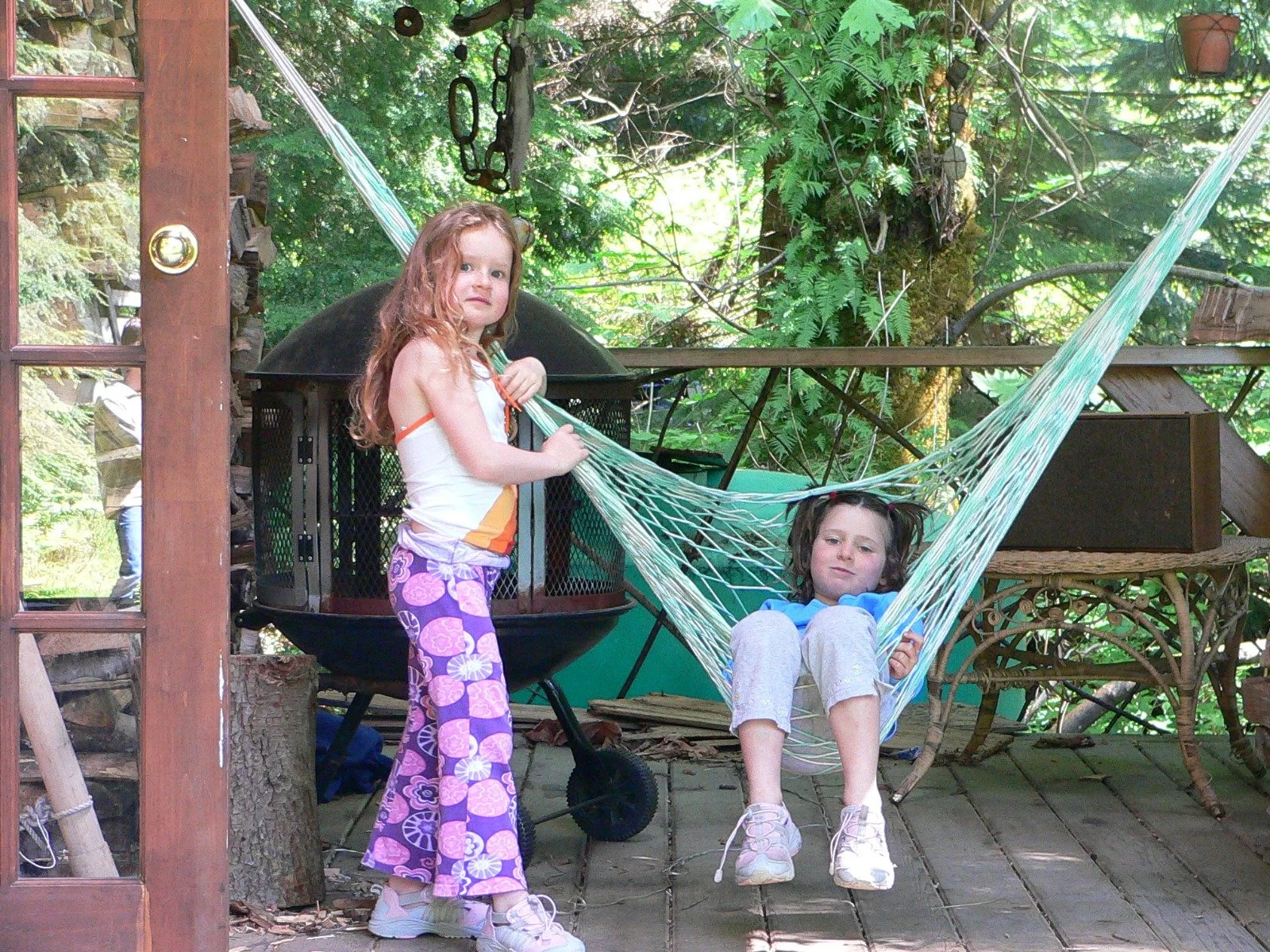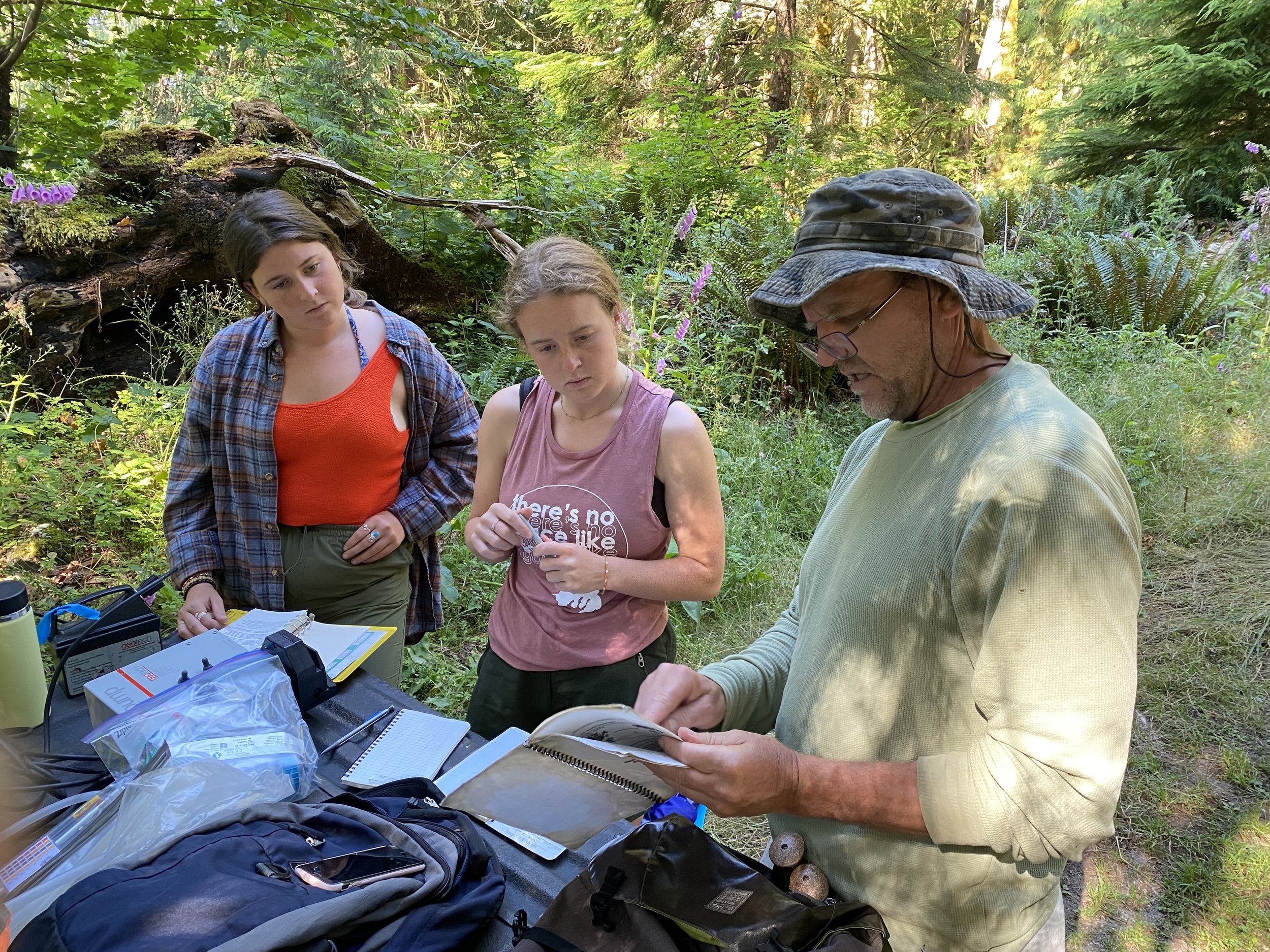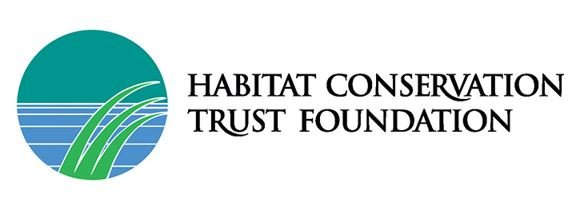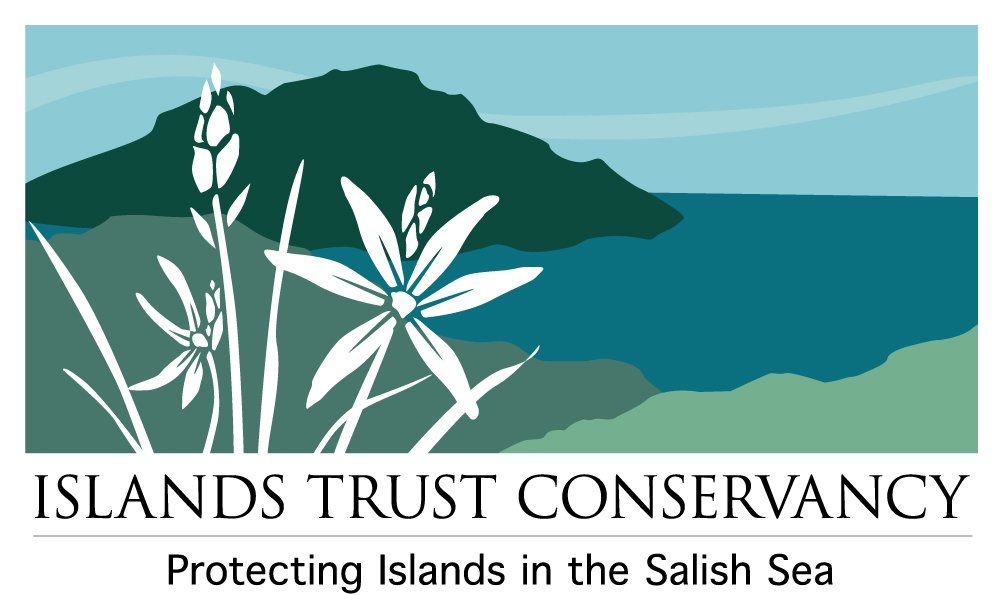Searching for Wex̱és (frogs) on Cha7élkwnech/Gambier Island
Coastal tailed frog (Ascaphus truei)
We're continuing our mission to strengthen collaboration in Átl'ḵa7tsem/Howe Sound. The Howe Sound Biosphere Region Initiative is collaborating with the Islands Trust Conservancy, the Gambier Island Conservancy and the Squamish Nation
to fund a scientific research project focused on sampling creeks for eDNA within seven watersheds on Gambier Island to determine the presence of the Coastal Tailed Frog.
Gambier is the largest island in Howe Sound, spanning roughly 69 square kilometres of a highly complex landscape. At least 10 watersheds lead to the ocean in all directions. Riparian areas and wetlands support at least five amphibian species and have probably remained isolated from the mainland for about 10,000 years (Friele and Clague 2002). These freshwater ecosystems are home to a massive diversity of species which provide extensive ecosystem services (i).
Red Legged Frog (Rana aurora)
Remarkably, Gambier Island retains a large interconnected mosaic of highly productive old and mature forest: An ecological asset increasingly rare in south coastal BC. Sustaining contiguous habitat complexity is essential for ecosystem resilience that sustains a rich diversity of old forest-dependent species (ii). Large contiguous areas of complex old forest are increasingly rare on southern gulf islands and threats from habitat loss and fragmentation have already caused extinctions of unique and irreplaceable components of biodiversity in these geographically isolated landscapes (iii). Because of the rarity of this type of ecosystem in the region, Gambier Island is home to many species at risk of extinction (iv). Most of these species are threatened by disturbances due to the extent of human settlements and the rapid rate of forest harvesting in south coastal BC.
Amphibian species' existence is threatened due to human activities in these fresh water systems, as streams are critical to amphibian survival for at least one life stage. Amphibians are extremely vulnerable to disruption, with population declines happening more rapidly than for birds or mammals; an estimated 70% of amphibian species are experiencing population declines (v). At-risk amphibians reported to have been found on the island include the Coastal Tailed Frog and the Red-Legged Frog.
The Coastal Tailed Frog has been observed in streams on Gambier (vi). The Coastal Tailed Frog and Northern Red-Legged Frog are listed as a Special Concern by SARA, but no records exist in the BC Government Conservation Data center (2020). Coastal-tailed frogs are rare on islands (vii) and the geographically isolated Gambier Island population is probably unique from surrounding mainland populations. We risk losing a significant component of biological diversity before it is formally recognized.
This project is also a wonderful summer experience for two friends that grew up together on Gambier Island during the summers. Throughout the spring and summer of 2021, Sylvia and Samantha volunteered with professional biologist Mike Stamford to conduct eDNA sampling in Whispering Creek as well as Mannion and McDonald Creek. Now in 2022, they are sampling all seven major watersheds on Gambier Island. Their scientific backgrounds, as well as experience in the area, provide them with a strong foundation for this research.
Sylvia Ascher and Samantha Wing became best friends when they were three years old and grew up attending the same preschool, elementary and highschool in Vancouver as well as spending time on Gambier together. As both of their families have owned property in West Bay for about twenty years, they had the incredible privilege to grow up running around the forest and diving into the ocean together.
i - Meidinger & Pojar, 1991, ii - e.g. Doyle and Yadao 1999; Gayton and Almuedo 2012; Oliver et al. 2015. iii - Harding and McCallum 1994; Cannings and Cannings 1996, iv - BC Conservation Data Center, 2020, v - Abney et al., 2019, vi - e.g. Doyle and Yadao 1999, vii - Environment and Climate Change 2016
Sylvia and Samantha, picutred here with Mike Stamford, are both undergraduate students now with strong interests in conservation work. Sylvia graduated from Erasmus University in June 2022 with a bachelor's degree in Neuroscience and Sustainability, and Samantha will be graduating from McGill University in May 2023 with a bachelor's degree in Cognitive Science and Environmental Science.
This project is supported by funding from:







